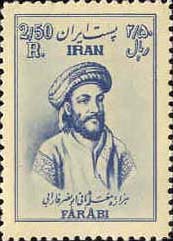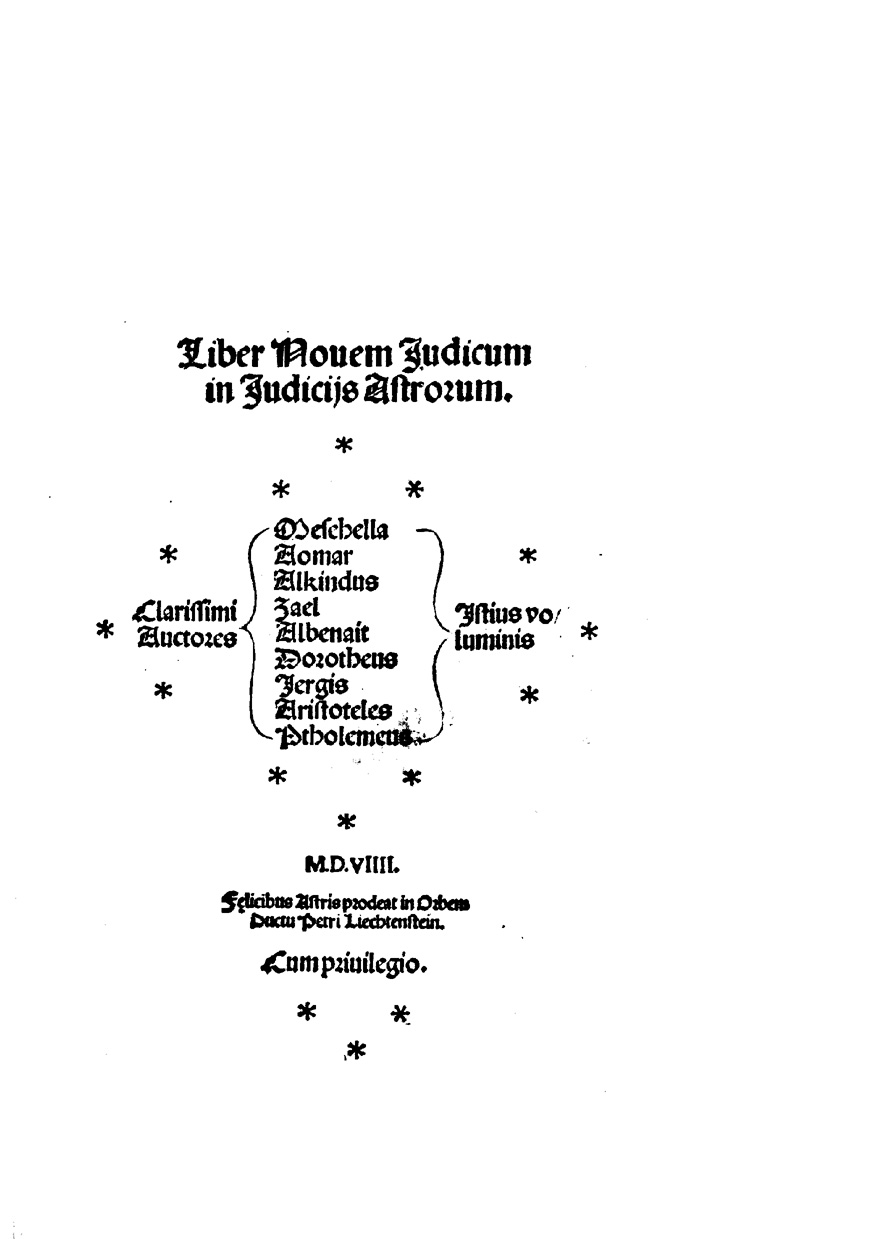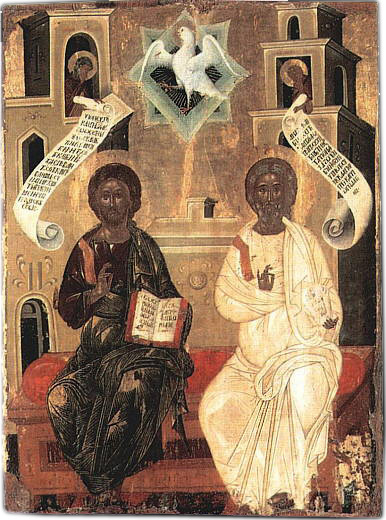|
The Enneads
The ''Enneads'' ( grc-gre, Ἐννεάδες), fully ''The Six Enneads'', is the collection of writings of the philosopher Plotinus, edited and compiled by his student Porphyry (270). Plotinus was a student of Ammonius Saccas, and together they were founders of Neoplatonism. His work, through Augustine of Hippo, the Cappadocian Fathers, Pseudo-Dionysius the Areopagite and several subsequent Christian and Muslim thinkers, has greatly influenced Western and Near-Eastern thought. Contents Porphyry edited the writings of Plotinus in fifty-four treatises, which vary greatly in length and number of chapters, mostly because he split original texts and joined others together to match this very number. Then, he proceeded to set the fifty-four treatises in groups of nine (Greek. ''ennea'') or ''Enneads''. He also collected ''The Enneads'' into three volumes. The first volume contained the first three ''Enneads'' (I, II, III), the second volume has the ''Fourth'' (IV) and the ''Fifth'' ( ... [...More Info...] [...Related Items...] OR: [Wikipedia] [Google] [Baidu] |
Plotinus
Plotinus (; grc-gre, Πλωτῖνος, ''Plōtînos''; – 270 CE) was a philosopher in the Hellenistic philosophy, Hellenistic tradition, born and raised in Roman Egypt. Plotinus is regarded by modern scholarship as the founder of Neoplatonism. His teacher was the self-taught philosopher Ammonius Saccas, who belonged to the Platonism, Platonic tradition. Historians of the 19th century invented the term "neoplatonism" and applied it to refer to Plotinus and his philosophy, which was vastly influential during Late Antiquity, the Middle Ages, and the Renaissance. Much of the biographical information about Plotinus comes from Porphyry (philosopher), Porphyry's preface to his edition of Plotinus' most notable literary work, ''The Enneads''. In his Metaphysics, metaphysical writings, Plotinus described three fundamental principles: Henology, the One, Nous, the Intellect, and the wikt:psyche#English, Soul. His works have inspired centuries of Paganism, Pagan, Jewish philosophy, ... [...More Info...] [...Related Items...] OR: [Wikipedia] [Google] [Baidu] |
Being
In metaphysics, ontology is the philosophical study of being, as well as related concepts such as existence, becoming, and reality. Ontology addresses questions like how entities are grouped into categories and which of these entities exist on the most fundamental level. Ontologists often try to determine what the categories or highest kinds are and how they form a system of categories that encompasses classification of all entities. Commonly proposed categories include substances, properties, relations, states of affairs and events. These categories are characterized by fundamental ontological concepts, including particularity and universality, abstractness and concreteness, or possibility and necessity. Of special interest is the concept of ontological dependence, which determines whether the entities of a category exist on the most fundamental level. Disagreements within ontology are often about whether entities belonging to a certain category exist and, if so, how they ... [...More Info...] [...Related Items...] OR: [Wikipedia] [Google] [Baidu] |
Émile Bréhier
Émile Bréhier (; 12 April 1876, Bar-le-Duc – 3 February 1952, Paris) was a French philosopher. His interest was in classical philosophy, and the history of philosophy. He wrote a ''Histoire de la Philosophie'', translated into English in seven volumes. Life Bréhier studied at the University of Paris. In 1908 he received his doctorate at the Sorbonne with a dissertation about Philo of Alexandria. From 1910 to 1912 he was Master of Philosophical Conferences at the University of Rennes, and professor of philosophy at the University of Bordeaux from 1912 to 1914. He was Henri Bergson's successor at the University of Paris in 1945. The historian Louis Bréhier was his brother. In 1914 Bréhier became a sub-lieutenant in the 344th Infantry Regiment; he was made knight of the '' Légion d'honneur''. Philosophical work He was an early follower of Bergson; in the 1930s there was an influential view that Bergsonism and Neoplatonism were linked. He has been called "the sole figure i ... [...More Info...] [...Related Items...] OR: [Wikipedia] [Google] [Baidu] |
Aristotle
Aristotle (; grc-gre, Ἀριστοτέλης ''Aristotélēs'', ; 384–322 BC) was a Greek philosopher and polymath during the Classical period in Ancient Greece. Taught by Plato, he was the founder of the Peripatetic school of philosophy within the Lyceum and the wider Aristotelian tradition. His writings cover many subjects including physics, biology, zoology, metaphysics, logic, ethics, aesthetics, poetry, theatre, music, rhetoric, psychology, linguistics, economics, politics, meteorology, geology, and government. Aristotle provided a complex synthesis of the various philosophies existing prior to him. It was above all from his teachings that the West inherited its intellectual lexicon, as well as problems and methods of inquiry. As a result, his philosophy has exerted a unique influence on almost every form of knowledge in the West and it continues to be a subject of contemporary philosophical discussion. Little is known about his life. Aristotle was born in th ... [...More Info...] [...Related Items...] OR: [Wikipedia] [Google] [Baidu] |
Islamic Philosophy
Islamic philosophy is philosophy that emerges from the Islamic tradition. Two terms traditionally used in the Islamic world are sometimes translated as philosophy—falsafa (literally: "philosophy"), which refers to philosophy as well as logic, mathematics, and physics; and Kalam (literally "speech"), which refers to a rationalist form of Scholastic Islamic theology which includes the schools of Maturidiyah, Ashaira and Mu'tazila. Early Islamic philosophy began with Al-Kindi in the 2nd century of the Islamic calendar (early 9th century CE) and ended with Averroes (Ibn Rushd) in the 6th century AH (late 12th century CE), broadly coinciding with the period known as the Golden Age of Islam. The death of Averroes effectively marked the end of a particular discipline of Islamic philosophy usually called the Peripatetic Islamic school, and philosophical activity declined significantly in Western Islamic countries such as Islamic Iberia and North Africa. Islamic philosophy persi ... [...More Info...] [...Related Items...] OR: [Wikipedia] [Google] [Baidu] |
The Theology Of Aristotle
''The Theology of Aristotle'', also called ''Theologia Aristotelis'' ( ar, أثولوجيا أرسطو, Athulujiya Aristu) is a paraphrase in Arabic of parts of Plotinus' '' Six Enneads'' along with Porphyry's commentary. It was traditionally attributed to Aristotle, but as this attribution is certainly untrue it is conventional to describe the author as "Pseudo-Aristotle". It had a significant effect on early Islamic philosophy, due to Islamic interest in Aristotle. Al-Kindi (Alkindus) and Avicenna, for example, were influenced by Plotinus' works as mediated through the Theology and similar works. The translator attempted to integrate Aristotle's ideas with those of Plotinus — while trying to make Plotinus compatible with Christianity and Islam, thus yielding a unique synthesis. Overview ''The Theology of Aristotle'', with ''The Letter on Divine Science'' and ''The Sayings of the Greek Sage,'' a collection of fragments, together form the ''Plotiniana Arabica''. They seem ... [...More Info...] [...Related Items...] OR: [Wikipedia] [Google] [Baidu] |
Avicenna
Ibn Sina ( fa, ابن سینا; 980 – June 1037 CE), commonly known in the West as Avicenna (), was a Persian polymath who is regarded as one of the most significant physicians, astronomers, philosophers, and writers of the Islamic Golden Age, and the father of early modern medicine. Sajjad H. Rizvi has called Avicenna "arguably the most influential philosopher of the pre-modern era". He was a Muslim Peripatetic philosopher influenced by Greek Aristotelian philosophy. Of the 450 works he is believed to have written, around 240 have survived, including 150 on philosophy and 40 on medicine. His most famous works are ''The Book of Healing'', a philosophical and scientific encyclopedia, and ''The Canon of Medicine'', a medical encyclopedia which became a standard medical text at many medieval universities and remained in use as late as 1650. Besides philosophy and medicine, Avicenna's corpus includes writings on astronomy, alchemy, geography and geology, psychology, I ... [...More Info...] [...Related Items...] OR: [Wikipedia] [Google] [Baidu] |
Al-Farabi
Abu Nasr Muhammad Al-Farabi ( fa, ابونصر محمد فارابی), ( ar, أبو نصر محمد الفارابي), known in the Western world, West as Alpharabius; (c. 872 – between 14 December, 950 and 12 January, 951)PDF version was a renowned Early Islamic philosophy, early Islamic philosopher and jurist who wrote in the fields of political philosophy, metaphysics, ethics and logic. He was also a Islamic science, scientist, Islamic astronomy, cosmologist, Mathematics in medieval Islam, mathematician and Islamic music, music theorist.Ludwig W. Adamec (2009), ''Historical Dictionary of Islam'', pp.95–96. Scarecrow Press. . In Islamic philosophy, Islamic philosophical tradition he was often called "the Second Teacher", following Aristotle who was known as "the First Teacher". He is credited with preserving the original Ancient Greek literature, Greek texts during the Middle Ages via his Commentary (philology), commentaries and treatises, and influencing many prominent philo ... [...More Info...] [...Related Items...] OR: [Wikipedia] [Google] [Baidu] |
Al-Kindi
Abū Yūsuf Yaʻqūb ibn ʼIsḥāq aṣ-Ṣabbāḥ al-Kindī (; ar, أبو يوسف يعقوب بن إسحاق الصبّاح الكندي; la, Alkindus; c. 801–873 AD) was an Arab Muslim philosopher, polymath, mathematician, physician and music theorist. Al-Kindi was the first of the Islamic peripatetic philosophers, and is hailed as the "father of Arab philosophy". Al-Kindi was born in Kufa and educated in Baghdad. He became a prominent figure in the House of Wisdom, and a number of Abbasid Caliphs appointed him to oversee the translation of Greek scientific and philosophical texts into the Arabic language. This contact with "the philosophy of the ancients" (as Hellenistic philosophy was often referred to by Muslim scholars) had a profound effect on him, as he synthesized, adapted and promoted Hellenistic and Peripatetic philosophy in the Muslim world. He subsequently wrote hundreds of original treatises of his own on a range of subjects ranging from metaphysics, ethi ... [...More Info...] [...Related Items...] OR: [Wikipedia] [Google] [Baidu] |
Byzantine
The Byzantine Empire, also referred to as the Eastern Roman Empire or Byzantium, was the continuation of the Roman Empire primarily in its eastern provinces during Late Antiquity and the Middle Ages, when its capital city was Constantinople. It survived the fragmentation and fall of the Western Roman Empire in the 5th century AD and continued to exist for an additional thousand years until the fall of Constantinople to the Ottoman Empire in 1453. During most of its existence, the empire remained the most powerful economic, cultural, and military force in Europe. The terms "Byzantine Empire" and "Eastern Roman Empire" were coined after the end of the realm; its citizens continued to refer to their empire as the Roman Empire, and to themselves as Romans—a term which Greeks continued to use for themselves into Ottoman times. Although the Roman state continued and its traditions were maintained, modern historians prefer to differentiate the Byzantine Empire from Ancient Rome a ... [...More Info...] [...Related Items...] OR: [Wikipedia] [Google] [Baidu] |
Western Roman Empire
The Western Roman Empire comprised the western provinces of the Roman Empire at any time during which they were administered by a separate independent Imperial court; in particular, this term is used in historiography to describe the period from 395 to 476, where there were separate coequal courts dividing the governance of the empire in the Western and the Eastern provinces, with a distinct imperial succession in the separate courts. The terms Western Roman Empire and Eastern Roman Empire were coined in modern times to describe political entities that were ''de facto'' independent; contemporary Romans did not consider the Empire to have been split into two empires but viewed it as a single polity governed by two imperial courts as an administrative expediency. The Western Roman Empire collapsed in 476, and the Western imperial court in Ravenna was formally dissolved by Justinian in 554. The Eastern imperial court survived until 1453. Though the Empire had seen periods with m ... [...More Info...] [...Related Items...] OR: [Wikipedia] [Google] [Baidu] |
Hypostasis (philosophy And Religion)
Hypostasis (Greek: ὑπόστασις, ''hypóstasis'') is the underlying state or underlying substance and is the fundamental reality that supports all else. In Neoplatonism the hypostasis of the soul, the intellect (''nous'') and "the one" was addressed by Plotinus. In Christian theology, the Holy Trinity consists of three hypostases: Hypostasis of the Father, Hypostasis of the Son, and Hypostasis of the Holy Spirit. Ancient Greek philosophy Pseudo-Aristotle used hypostasis in the sense of material substance. Neoplatonists argue that beneath the surface phenomena that present themselves to our senses are three higher spiritual principles, or hypostases, each one more sublime than the preceding. For Plotinus, these are the Soul, the Intellect, and the One.''Neoplatonism (Ancient Philosophies)'' by Pauliina Remes (2008), University of California Press , pp. 48–52. Christian theology The term hypostasis has a particular significance in Christian theology, particularly in Ch ... [...More Info...] [...Related Items...] OR: [Wikipedia] [Google] [Baidu] |






